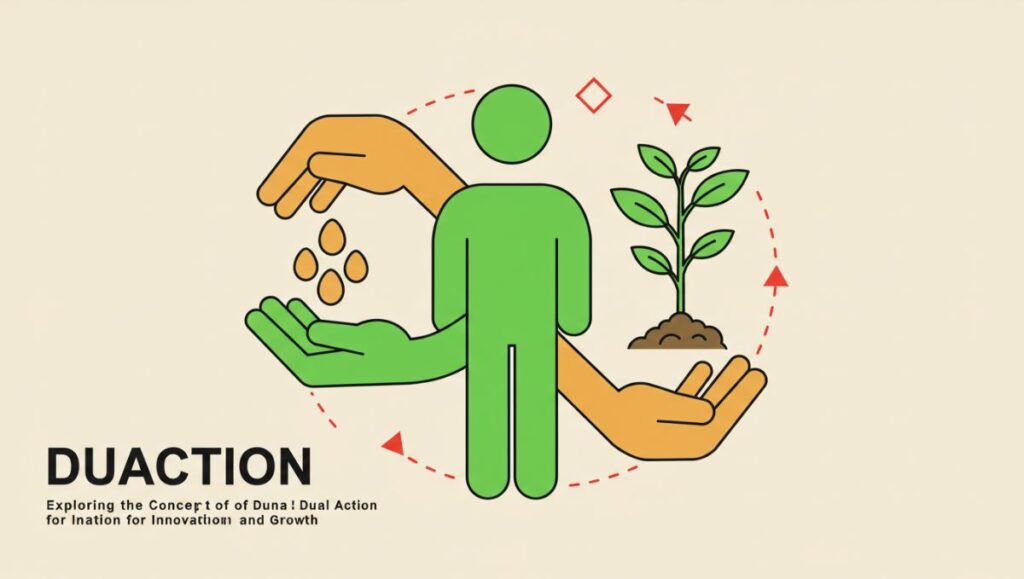In a world where efficiency and adaptability are vital, the concept of Duaction stands out as a powerful approach. At its core, duaction refers to the principle of “dual action”—the ability to combine two forces, strategies, or functions to achieve greater outcomes. This concept is increasingly applied across industries such as education, business, technology, health, and sustainability.
Duaction represents balance: bringing together seemingly separate elements to work in harmony for innovation, growth, and resilience.
The Meaning of Duaction
Linguistic Roots
The term “duaction” can be understood as a combination of “dual” and “action.” While not a traditional dictionary word, it conveys the idea of achieving progress by integrating two complementary actions simultaneously.
Conceptual Importance
Duaction emphasizes that no single approach is enough in modern times. Whether it’s managing resources, developing strategies, or solving problems, combining two perspectives often produces more sustainable and impactful results.
Applications of Duaction in Different Fields
1. Duaction in Education
Education is one of the best examples of du-action in practice. Traditional teaching methods are increasingly blended with digital technologies to provide a balanced learning experience. This dual action ensures that students receive both personal guidance and the benefits of online resources.
-
Face-to-face learning + digital learning = blended learning
-
Theory + practice = skill-based education
-
Discipline + creativity = holistic student development
2. Duaction in Business and Management
In business, du-action highlights the importance of balancing profit with purpose. Modern organizations are expected to drive financial success while maintaining ethical and sustainable practices.
-
Innovation + risk management keeps businesses competitive yet stable.
-
Growth strategies + corporate responsibility ensure long-term survival.
-
Automation + human creativity drives productivity without losing personal touch.
3. Duaction in Technology
Technology thrives on the principle of du-action. Every breakthrough relies on combining two or more elements to create something greater.
-
Hardware + software working together creates seamless digital ecosystems.
-
Artificial intelligence + human expertise improves decision-making.
-
Cloud computing + cybersecurity provides accessibility with safety.
4. Duaction in Healthcare
Healthcare increasingly adopts a dual-action approach. Treatments are no longer limited to medicine alone; they combine prevention, lifestyle changes, and digital monitoring.
-
Medical treatment + wellness programs lead to healthier outcomes.
-
Traditional methods + modern technology improve diagnosis and therapy.
-
Physical health + mental health care create a holistic approach to well-being.
5. Duaction in Sustainability
Sustainability is perhaps the most vital area for du-action. Tackling climate change requires joint action from governments, corporations, and individuals.
-
Renewable energy + efficient consumption leads to greener societies.
-
Economic growth + environmental protection ensures balance.
-
Local action + global cooperation accelerates climate solutions.
Advantages of Duaction
-
Balance: Helps maintain stability between competing priorities.
-
Innovation: Encourages creative solutions through integration.
-
Efficiency: Maximizes output by combining resources.
-
Adaptability: Equips individuals and organizations to handle challenges.
-
Sustainability: Promotes long-term thinking and responsibility.
Challenges of Implementing Du-action
Although duaction is a powerful concept, it comes with challenges:
-
Complexity: Managing two simultaneous actions requires planning.
-
Conflicts: Different goals can sometimes contradict each other.
-
Costs: Dual strategies may need more resources initially.
-
Consistency: Maintaining balance over time is not always easy.
Organizations and individuals must carefully design frameworks to implement duaction effectively.
Real-Life Examples
-
Education: Universities offering blended learning platforms.
-
Business: Companies like Tesla are combining innovation with sustainability.
-
Technology: Smartphones merging communication and computing.
-
Healthcare: Telemedicine services combining digital platforms with physical care.
-
Sustainability: Urban planning integrating green energy with infrastructure growth.
These examples highlight how duaction has already become part of our daily lives.
Duaction and the Future
The future will rely heavily on duaction. With rapid changes in technology, climate, and global economics, no single approach will suffice. Dual action strategies will define how societies adapt and thrive.
-
Smart cities will combine digital technology with environmental design.
-
Future jobs will require both technical skills and emotional intelligence.
-
Global governance will need both national sovereignty and international cooperation.
By embracing duaction, humanity can create resilient systems capable of withstanding challenges while driving progress.
Conclusion
Duaction is more than just a concept—it is a philosophy of balance, integration, and progress. Whether applied in education, business, technology, healthcare, or sustainability, the principle of dual action ensures stronger, smarter, and more adaptable solutions.
In a rapidly changing world, du-action provides the framework we need to move forward—not by choosing one path over another, but by embracing both together.







